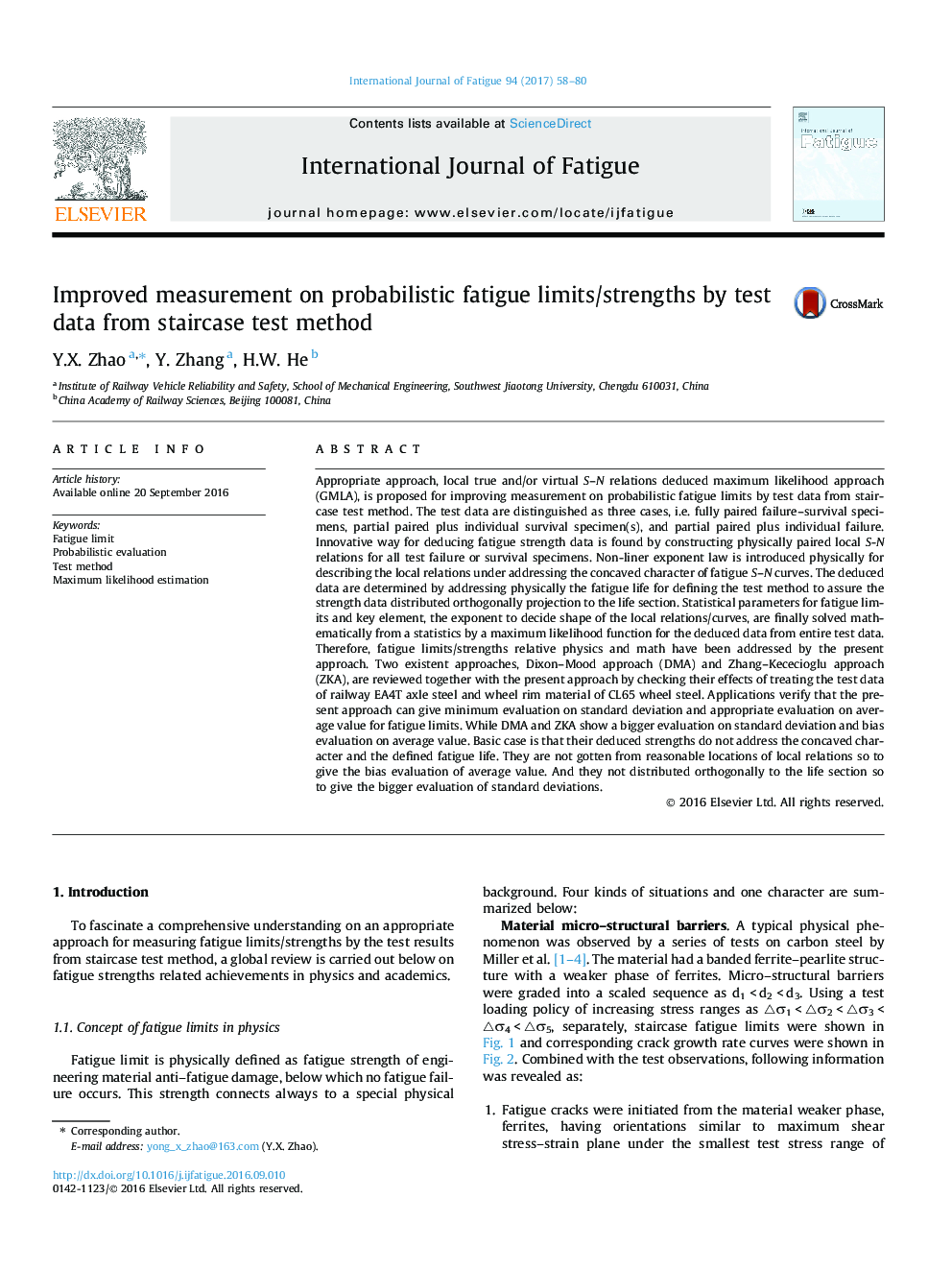| کد مقاله | کد نشریه | سال انتشار | مقاله انگلیسی | نسخه تمام متن |
|---|---|---|---|---|
| 5015201 | 1463732 | 2017 | 23 صفحه PDF | دانلود رایگان |
عنوان انگلیسی مقاله ISI
Improved measurement on probabilistic fatigue limits/strengths by test data from staircase test method
ترجمه فارسی عنوان
اندازه گیری های اندازه گیری محدودیت / شدت خستگی احتمالی توسط داده های آزمون از روش آزمون راه پله
دانلود مقاله + سفارش ترجمه
دانلود مقاله ISI انگلیسی
رایگان برای ایرانیان
کلمات کلیدی
حد خستگی، ارزیابی احتمالی، روش آزمون، برآورد حداکثر احتمال،
موضوعات مرتبط
مهندسی و علوم پایه
سایر رشته های مهندسی
مهندسی مکانیک
چکیده انگلیسی
Appropriate approach, local true and/or virtual S-N relations deduced maximum likelihood approach (GMLA), is proposed for improving measurement on probabilistic fatigue limits by test data from staircase test method. The test data are distinguished as three cases, i.e. fully paired failure-survival specimens, partial paired plus individual survival specimen(s), and partial paired plus individual failure. Innovative way for deducing fatigue strength data is found by constructing physically paired local S-N relations for all test failure or survival specimens. Non-liner exponent law is introduced physically for describing the local relations under addressing the concaved character of fatigue S-N curves. The deduced data are determined by addressing physically the fatigue life for defining the test method to assure the strength data distributed orthogonally projection to the life section. Statistical parameters for fatigue limits and key element, the exponent to decide shape of the local relations/curves, are finally solved mathematically from a statistics by a maximum likelihood function for the deduced data from entire test data. Therefore, fatigue limits/strengths relative physics and math have been addressed by the present approach. Two existent approaches, Dixon-Mood approach (DMA) and Zhang-Kececioglu approach (ZKA), are reviewed together with the present approach by checking their effects of treating the test data of railway EA4T axle steel and wheel rim material of CL65 wheel steel. Applications verify that the present approach can give minimum evaluation on standard deviation and appropriate evaluation on average value for fatigue limits. While DMA and ZKA show a bigger evaluation on standard deviation and bias evaluation on average value. Basic case is that their deduced strengths do not address the concaved character and the defined fatigue life. They are not gotten from reasonable locations of local relations so to give the bias evaluation of average value. And they not distributed orthogonally to the life section so to give the bigger evaluation of standard deviations.
ناشر
Database: Elsevier - ScienceDirect (ساینس دایرکت)
Journal: International Journal of Fatigue - Volume 94, Part 1, January 2017, Pages 58-80
Journal: International Journal of Fatigue - Volume 94, Part 1, January 2017, Pages 58-80
نویسندگان
Y.X. Zhao, Y. Zhang, H.W. He,
